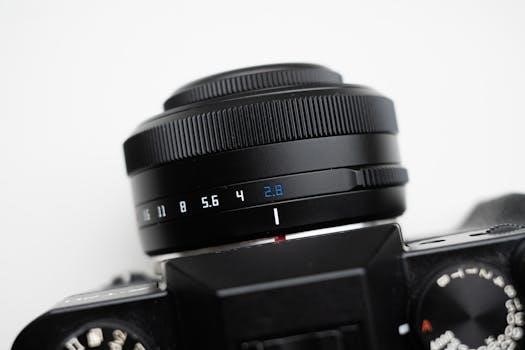ANN-80 User Manual⁚ A Comprehensive Guide
This user manual provides a comprehensive guide to the ANN-80 series remote fire annunciators. These compact, backlit LCD displays are designed for use with compatible Fire Alarm Control Panels (FACPs). The ANN-80 mimics the FACP display, showing system status in English, including device type and alarm status.

Overview of the ANN-80 Series
The ANN-80 series encompasses remote fire annunciators designed to enhance fire alarm system monitoring and control. These devices, including the ANN-80, ANN-80-W, and ANN-80C models, are compact, backlit LCD displays intended for use with compatible Fire Alarm Control Panels (FACPs). They essentially mirror the information presented on the FACP, offering a remote, easily accessible view of the system’s status.
A key feature of the ANN-80 series is their ability to display system point status in clear English text. This includes details such as the device type, its zone, and its alarm, trouble, or supervisory status. Furthermore, the annunciators can display custom alpha labels programmed into the control panel, providing even more specific information about each point in the system.
These annunciators also include control switches that allow for remote control of critical system functions. To prevent unauthorized operation, a keyswitch is included, ensuring that only authorized personnel can access and manipulate these controls. Up to eight ANN-80 units can be connected to each ANN-Bus of an FACP, providing extensive coverage and monitoring capabilities. A significant advantage is that no programming is required for these units, saving time and effort during system commissioning.
Compatibility with FACPs
The ANN-80 series annunciators are designed for seamless integration with a range of Fire Alarm Control Panels (FACPs). Compatibility is ensured through the utilization of the ANN-Bus communication format, a two-wire serial interface that facilitates reliable data exchange between the annunciator and the FACP. This standardized communication protocol allows the ANN-80 to accurately mirror the FACP display, providing a consistent view of system status at remote locations.
Specifically, the ANN-80 annunciators are known to work with Fire-Lite and Notifier FACPs, offering flexibility in system design and implementation. While the Notifier N-ANN-80 is a recommended pairing for Notifier NFW-50X panels, the Fire-Lite version (ANN-80) may also be compatible, though it’s crucial to verify this compatibility before installation. Consulting the FACP’s documentation and conducting thorough testing can confirm whether the Fire-Lite ANN-80 functions correctly with a specific Notifier panel.
Moreover, the ANN-80 series is designed to work with FACPs that support the ANN-Bus communication format. This format allows for the connection of multiple annunciators, up to eight per ANN-Bus, expanding the monitoring capabilities of the fire alarm system. The annunciators receive power through additional wires, either from the host FACP or a remote UL Listed, filtered power supply, ensuring stable and reliable operation.
Understanding System Status Indicators
The ANN-80 annunciator provides clear and concise system status information through a series of readily understandable indicators. These indicators are crucial for quickly assessing the operational state of the fire alarm system and responding appropriately to any alerts or issues. The primary status indicators include visual cues for AC Power, Alarm, Trouble, Supervisory, and Alarm Silenced conditions.
The AC Power indicator confirms that the annunciator is receiving power from the main source. An illuminated Alarm indicator signifies an active alarm event, while the Trouble indicator indicates a system fault or malfunction that requires attention. The Supervisory indicator denotes a supervisory condition, such as a sprinkler system activation or other non-alarm event that needs monitoring.
Furthermore, the Alarm Silenced indicator confirms that the audible alarm has been temporarily silenced. The ANN-80’s 80-character LCD screen provides detailed English-language text describing the specific nature of each event, including the device type, zone, and any custom alpha labels programmed into the control panel. This comprehensive display enables users to quickly identify the source and severity of any system alerts, facilitating effective and timely responses.
LCD Display Features
The ANN-80 boasts a user-friendly LCD display designed for optimal clarity and ease of understanding. The backlit, 80-character screen presents system status information in plain English, eliminating ambiguity and ensuring that personnel can quickly interpret critical data. This feature is especially valuable during emergencies when swift and accurate assessment is paramount.
The display mimics the Fire Alarm Control Panel (FACP), providing a consistent user experience and minimizing the learning curve for operators familiar with the main panel interface. The LCD is capable of showing device type, zone, independent point alarm, trouble or supervisory status, and any custom alpha labels programmed into the control panel.
The backlighting ensures readability even in dimly lit environments, enhancing visibility and promoting accurate interpretation of the displayed information. The clear and concise presentation of data on the LCD display empowers users to make informed decisions, contributing to the overall effectiveness of the fire alarm system.
Communication Protocol⁚ The ANN-Bus
The ANN-80 series utilizes the ANN-Bus communication protocol for seamless interaction with compatible Fire Alarm Control Panels (FACPs). This two-wire serial interface facilitates reliable data transmission between the annunciator and the main control panel, ensuring that system status updates are promptly relayed.
The ANN-Bus protocol allows for multiple ANN-80 units to be connected to a single FACP, expanding the system’s monitoring capabilities without requiring extensive wiring. This efficient communication method simplifies installation and reduces overall system costs. The protocol supports the transmission of various data points, including alarm, trouble, supervisory, and system status indicators.
The ANN-Bus protocol is designed for robust performance, minimizing the risk of communication errors and ensuring that critical information reaches the designated personnel without delay. This robust communication link ensures that the annunciator accurately reflects the status of the fire alarm system, enhancing the overall safety and security of the protected premises.
Remote Control Functionality
The ANN-80 series offers remote control functionality, empowering authorized personnel to manage critical system operations directly from the annunciator. Equipped with control switches, the ANN-80 allows for remote control of essential system functions, providing convenience and enhanced response capabilities during emergencies.
To prevent unauthorized operation, a keyswitch is incorporated, ensuring that only designated individuals can access and manipulate the control functions. This security measure safeguards the system against accidental or malicious tampering, maintaining the integrity and reliability of the fire alarm system.
The remote control functionality extends to various system operations, such as alarm silence, system reset, and drill activation, enabling quick and efficient response to evolving situations. This capability is particularly valuable in larger facilities or those with multiple zones, where centralized control can streamline emergency response efforts. The ANN-80’s remote control features contribute to a more proactive and responsive fire safety strategy.
Installation Guide
This section details the installation process for the ANN-80 series remote annunciators; Prior to installation, verify that the annunciator is compatible with your Fire Alarm Control Panel (FACP). Ensure the FACP is powered down before commencing any wiring or connections.
The ANN-80 should be mounted in a location that is easily accessible and visible. The cover must remain attached to the backplate while mounting the annunciator to the electrical box or wall; Use appropriate mounting hardware for the wall type. Connect the ANN-Bus wires from the FACP to the corresponding terminals on the ANN-80, following the wiring diagram provided.
Secure all wire connections and ensure proper polarity. After wiring, carefully reattach the annunciator cover. Power up the FACP and verify that the ANN-80 is communicating correctly and displaying the system status information. If multiple ANN-80 units are being installed, repeat these steps for each unit, ensuring correct addressing according to the FACP’s specifications.
Power Requirements
Understanding the power requirements for the ANN-80 series annunciators is crucial for proper installation and operation. These devices require a specific voltage and current to function correctly, and failure to meet these requirements can lead to malfunction or damage.
The ANN-80 typically operates on 24 VDC (Volts Direct Current) and draws a relatively low current. Refer to the product’s datasheet or installation manual for the exact current draw specification, as it may vary slightly between models (ANN-80, ANN-80-W, ANN-80C). The power can be supplied either by the host FACP (Fire Alarm Control Panel) or from a remote UL Listed, filtered power supply. When using the FACP’s power, ensure that the FACP has sufficient capacity to power all connected devices, including the ANN-80 units. If the FACP’s power is insufficient, a separate power supply will be necessary.
Always use wiring of the appropriate gauge to handle the current. Ensure that the power supply is properly grounded and protected against overcurrent and short circuits.
Connecting Multiple ANN-80 Units
The ANN-80 annunciators can be connected in multiples to a compatible Fire Alarm Control Panel (FACP), allowing for expanded system monitoring and control. These units communicate with the FACP over a two-wire serial interface, utilizing the ANN-Bus communication format. Up to eight ANN-80 units can be connected to each ANN-Bus of a FACP, providing a flexible solution for various application requirements.
When connecting multiple units, it is essential to follow the wiring guidelines outlined in the installation manual. The ANN-Bus wiring must be properly terminated to ensure reliable communication. Daisy-chaining the units is the typical method, connecting each ANN-80 in series. Ensure that the total wire length does not exceed the maximum specified by the FACP manufacturer to prevent signal degradation. Address each ANN-80 individually, adhering to the addressing protocol specified in the FACP documentation.
Power for the connected devices can be provided by the FACP itself or by a remote UL-listed power supply. Carefully calculate the total current draw of all ANN-80 units to ensure that the power source is sufficient. Overloading the power supply can lead to system instability and malfunction.

Programming and Customization
The ANN-80 series offers a degree of programming and customization to tailor its functionality to specific system needs. While the ANN-80 does not require extensive programming for basic operation, certain parameters can be adjusted to optimize performance and user experience. Custom alpha labels programmed into the control panel are displayed on the ANN-80, providing specific location details.
Configuration settings, such as display brightness and contrast, can be modified to suit the ambient lighting conditions. Some models may also support custom messages or alerts, allowing for more detailed system status information to be presented to the user. These settings are typically accessed through a user-friendly interface on the FACP or via a dedicated programming tool.
Careful consideration should be given to the programming options available to ensure that the ANN-80 is configured to meet the specific requirements of the fire alarm system. Refer to the FACP documentation for detailed instructions on programming and customization options.

Note that no programming is required for basic functionality, which saves time during system commissioning.
Troubleshooting Common Issues
This section addresses common issues encountered while using the ANN-80 series annunciators and provides troubleshooting steps to resolve them. Before attempting any troubleshooting, ensure the power supply is stable and all connections are secure.
Issue 1⁚ No Display or Dim Display
Check the power supply to the ANN-80. Verify the contrast and brightness settings are properly adjusted. Inspect the wiring connections between the ANN-80 and the FACP.
Issue 2⁚ Communication Errors
Ensure the ANN-Bus wiring is correctly connected and terminated. Verify the ANN-80 address is unique and does not conflict with other devices on the bus. Check the FACP configuration for proper ANN-Bus settings.
Issue 3⁚ Incorrect System Status
Confirm the FACP is functioning correctly and accurately reporting system status. Verify the ANN-80 is properly synchronized with the FACP. Check for any conflicting custom labels or messages.
Issue 4⁚ Control Switch Malfunction
Ensure the keyswitch is in the correct position (if applicable). Verify the control switches are properly configured in the FACP. Check for any physical damage to the control switches.
If these steps do not resolve the issue, consult a qualified technician.
Maintenance and Care
Proper maintenance and care are crucial for ensuring the longevity and reliable operation of your ANN-80 series annunciator. Regular cleaning and inspection can prevent potential issues and maintain optimal performance. Always disconnect the power supply before performing any maintenance procedures;
Cleaning⁚
Use a soft, damp cloth to gently clean the LCD screen and the exterior casing of the ANN-80. Avoid using harsh chemicals, abrasive cleaners, or excessive moisture, as these can damage the display and internal components. Ensure the unit is completely dry before reconnecting the power supply.
Inspection⁚
Periodically inspect the wiring connections for any signs of damage, corrosion, or loose connections. Check the casing for any cracks or physical damage. Verify the functionality of the control switches and the keyswitch (if applicable).

Environmental Considerations⁚
Avoid exposing the ANN-80 to extreme temperatures, humidity, or direct sunlight. Ensure the annunciator is installed in a well-ventilated area to prevent overheating. Protect the unit from dust and other contaminants.
By following these simple maintenance and care guidelines, you can extend the lifespan of your ANN-80 and ensure its continued reliable operation.
Fire-Lite and Notifier ANN-80 Compatibility
The ANN-80 series annunciators, including models like ANN-80, ANN-80-W, and ANN-80C, are designed for compatibility with both Fire-Lite and Notifier Fire Alarm Control Panels (FACPs). These annunciators utilize the ANN-Bus communication format, which allows seamless integration and communication between the annunciator and the FACP.
Interchangeability⁚
While the ANN-80 models from Fire-Lite and Notifier share the same fundamental design and functionality, it’s crucial to verify compatibility with your specific FACP model. In some cases, firmware updates or specific configurations may be required to ensure proper operation.
Wiring and Connections⁚
The wiring connections for Fire-Lite and Notifier FACPs are typically standardized for ANN-Bus communication. Refer to the product installation document for your specific FACP and ANN-80 model to ensure correct wiring.
Configuration⁚
The ANN-80 annunciators generally require no programming. However, verify any specific configurations required by your FACP to ensure optimal performance. Up to eight ANN-80 units can be connected to each ANN-Bus of a FACP.
Troubleshooting⁚
If encountering issues with compatibility, consult the documentation for both the FACP and the ANN-80. Check for any known compatibility issues or required updates. It’s best to confirm compatibility before installation.
